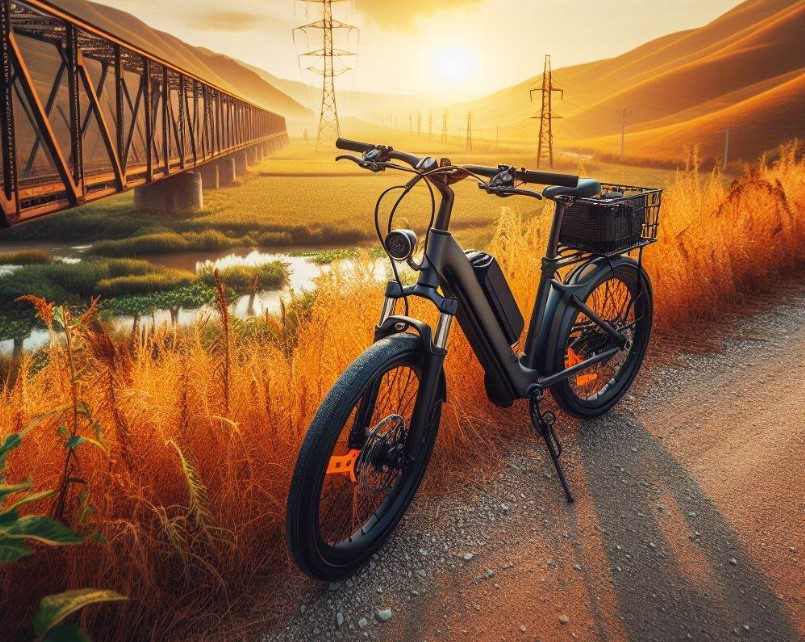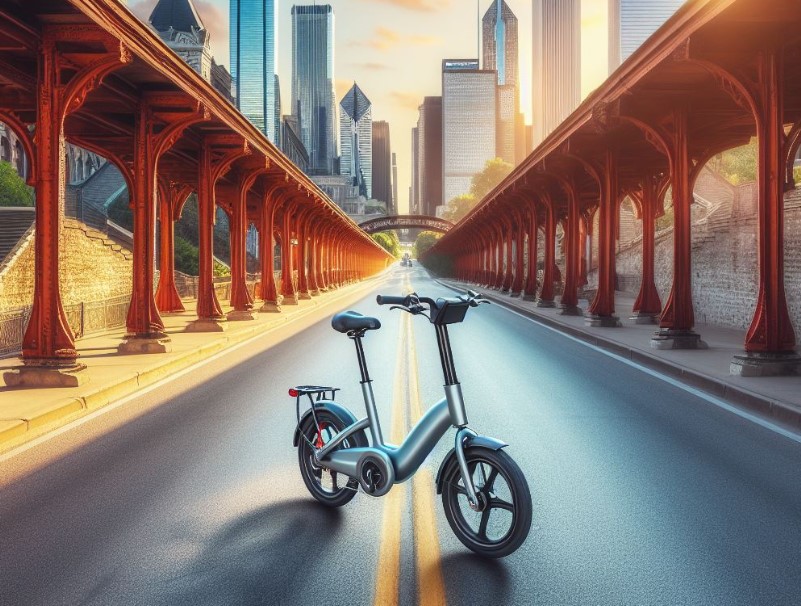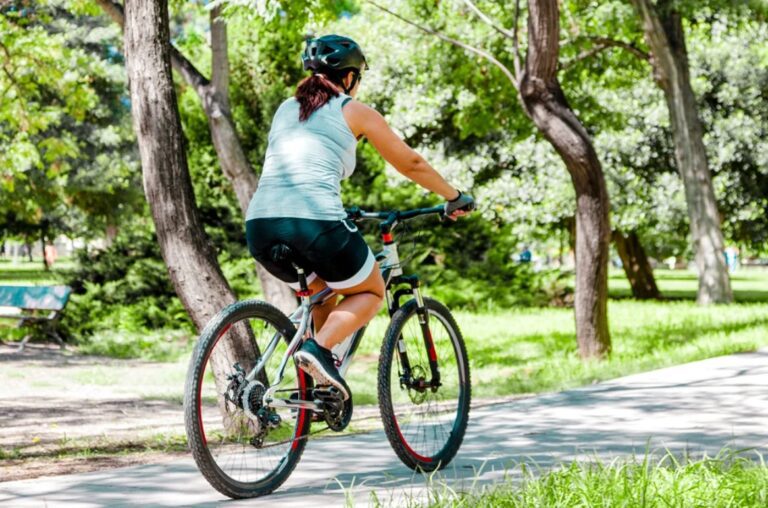Are Electric Bikes Allowed On The Illinois Prairie Path?
This article will explain Are Electric Bikes Allowed On The Illinois Prairie Path? The Illinois Prairie Path, a cherished route for outdoor enthusiasts, invites questions about the accessibility of modern, eco-friendly transportation options. Specifically, the compatibility of electric bikes (e-bikes) with this path is a topic of interest for many looking to merge technology with nature. This exploration aims to clarify regulations and provide a comprehensive understanding of e-bike usage on this beloved trail.
Key Takeaways
- Electric bikes are permitted on the Illinois Prairie Path, with specific regulations to ensure safety and harmony among trail users.
- Riders must adhere to speed limits and trail etiquette to maintain a safe environment for all.
- Understanding the classification of e-bikes is crucial for compliance with local regulations.
Are Electric Bikes Allowed On The Illinois Prairie Path?
Yes, electric bikes are allowed on the Illinois Prairie Path, subject to specific classifications and regulations designed to ensure the safety and enjoyment of all path users.

Understanding E-Bike Regulations
When it comes to enjoying the Illinois Prairie Path on two wheels, understanding the nuances of e-bike regulations is paramount. The state of Illinois categorizes electric bicycles into three classes, each with its own set of rules designed to integrate e-bikes safely into public spaces, including trails and paths.
Classifications and Restrictions
Electric bikes, defined by their ability to assist the rider using an electric motor, fall into three classes.
- Class 1 e-bikes are pedal-assist only, with no throttle, and the motor ceases to assist when the bike reaches 20 mph. C
- lass 2 e-bikes also have a maximum speed of 20 mph but include a throttle-actuated motor.
- Class 3 e-bikes are pedal-assist only, with a maximum speed of 28 mph. On the Illinois Prairie Path, Class 1 and Class 2 e-bikes are generally allowed, focusing on maintaining a safe and enjoyable environment for all users.
Safety Guidelines and Trail Etiquette
Safety is a priority on the Illinois Prairie Path. E-bike riders are encouraged to adhere to a speed limit that respects the mixed-use nature of the path, generally not exceeding 15 mph.
This ensures a harmonious coexistence with pedestrians, traditional cyclists, and nature enthusiasts. Wearing helmets, using lights and reflectors, and signaling intentions are practices that enhance safety for everyone on the path.
Benefits of E-Bikes on the Path
E-bikes bring a unique set of advantages to the Illinois Prairie Path, offering an inclusive option for people of varying fitness levels and ages to explore the beauty of the trail.
Accessibility and Inclusivity
The introduction of e-bikes opens up the path to a broader audience, including those who may find traditional biking too strenuous. This inclusivity enriches the community spirit of the path and encourages more people to embrace the outdoors and the joy of cycling.
Environmental Impact and Sustainability
E-bikes represent a green alternative to motor vehicles, reducing carbon footprints and promoting sustainability. Their efficiency and ease of use make them an attractive option for environmentally conscious riders looking to enjoy the path’s natural beauty without contributing to pollution.
Understanding how to navigate the Illinois Prairie Path with an electric bike ensures a seamless and enjoyable experience. This section covers practical advice on route planning, respecting nature, and coexisting with other path users.
Route Planning and Preparation
Before setting out, e-bikers should familiarize themselves with the path’s segments and conditions. Planning routes according to ability and battery life maximizes enjoyment and ensures a safe return journey. Additionally, being prepared for varying weather conditions and carrying essential supplies, such as water and a repair kit, is advisable.
Respecting Nature and Wildlife
The Illinois Prairie Path is home to diverse flora and fauna. Riders are encouraged to stay on designated trails, avoid disturbing wildlife, and carry out all trash. These practices preserve the path’s ecological integrity and ensure it remains a haven for future generations.
The Future of E-Bikes on the Path
As e-bike popularity continues to rise, their integration into public trails like the Illinois Prairie Path presents both opportunities and challenges. This section explores future considerations for policy adjustments, infrastructure improvements, and community education to accommodate e-bikes effectively.
Policy Adjustments and Infrastructure
Adapting policies to accommodate the growing number of e-bike riders while ensuring safety and environmental protection will be crucial. This may include revising speed limits, enhancing path infrastructure to support increased traffic, and implementing clear signage to guide e-bike usage.
Community Education and Awareness
Educating the public about e-bike etiquette, safety practices, and the benefits of e-biking contributes to a positive and inclusive trail experience. Workshops, informational campaigns, and collaboration with e-bike groups can foster a respectful and informed community of path users.
Is An Electric Bike Considered A Motorized Vehicle In Illinois?
In Illinois, electric bikes (e-bikes) are not classified as motorized vehicles in the same manner as cars, motorcycles, or mopeds. Instead, they are defined and regulated under specific e-bike legislation.

The state categorizes e-bikes into three classes based on their maximum speed and whether they are equipped with throttle-assisted propulsion. Class 1 and Class 2 e-bikes are limited to 20 mph, with Class 1 being pedal-assist only and Class 2 allowing for throttle use. Class 3 e-bikes are pedal-assist only, with a maximum speed of 28 mph.
These classifications ensure that e-bikes are treated distinctly from traditional motorized vehicles, with different rules regarding their use on roads, bike paths, and some trails.
For instance, e-bikes are allowed on roads where bicycles are permitted but are subject to specific local regulations when it comes to trail and path usage. This distinction aims to balance the benefits of e-bikes with safety and environmental considerations, especially in shared spaces.
Why Are E-Bikes Not Allowed On Trails?
The prohibition of e-bikes on certain trails can be attributed to several reasons, primarily revolving around safety, environmental impact, and the preservation of trail integrity. Trails not designed to accommodate motorized transportation may impose bans on e-bikes to prevent:

- Safety Risks: Higher speeds of e-bikes compared to conventional bicycles can increase the risk of collisions, especially on narrow, crowded, or mixed-use trails.
- Environmental Damage: E-bikes, particularly those with higher torque, can potentially cause more wear and tear on natural surfaces, leading to erosion and habitat disruption.
- Preservation of Trail Experience: Many trails are designed to offer a tranquil, nature-immersive experience. The presence of motorized vehicles, including e-bikes, might detract from this atmosphere, prompting restrictions.
Local authorities and trail management organizations typically assess these factors when determining e-bike policies. The goal is to ensure the safety of all trail users, protect natural resources, and maintain the intended character of the trail.
Do You Ride Electric Scooters On Bike Trails?
The use of electric scooters on bike trails varies significantly based on local regulations and the specific policies of the trail in question. While some bike trails welcome electric scooters as a form of clean, efficient transportation that aligns with the goals of promoting non-motorized vehicle use, others may restrict them for reasons similar to those concerning e-bikes:
- Safety Concerns: Electric scooters can reach speeds that may not be safe for all bike trails, especially those frequented by pedestrians and traditional cyclists.
- Trail Integrity: Trails designed primarily for foot traffic and non-motorized bicycles might not withstand the wear from electric scooters, leading to maintenance and preservation issues.
- User Compatibility: Trails are often shared spaces that cater to a variety of users. The introduction of electric scooters requires careful consideration of how different modes of transportation interact.
Ultimately, the decision to allow electric scooters on bike trails depends on the managing authority’s assessment of these factors. Riders are encouraged to check the specific rules and regulations of their local trails before riding an electric scooter on them.
Conclusion
In summary, electric bikes represent a welcome addition to the Illinois Prairie Path, granted they adhere to the designated class restrictions and guidelines. This integration underscores a commitment to sustainable and inclusive outdoor recreation.
Riders are encouraged to familiarize themselves with local rules, promoting a harmonious coexistence with traditional cyclists and pedestrians on this scenic route.
Top FAQ’s
Can I bring my e-bike on public transportation to reach the Illinois Prairie Path?
Policies regarding e-bikes on public transportation vary by service provider. Some transit systems may allow folding e-bikes as carry-ons, while others might have restrictions. Check with local transit authorities for their specific rules before planning your trip.
What etiquette should e-bike riders follow on the Illinois Prairie Path?
E-bike riders should follow common trail etiquette: yield to pedestrians, signal when passing, keep to the right except when overtaking, and maintain a safe speed. Being polite and communicative with other path users ensures a positive experience for everyone.
Is it okay to ride side by side with another e-bike or bicycle on the path?
Riding side by side is generally discouraged on the Illinois Prairie Path, especially when the path is busy. It’s important to maintain a single file to allow ample passing room for other path users and to prevent blocking the way. Always be considerate and aware of surrounding traffic.
Are helmets required for e-bike riders on the Illinois Prairie Path?
While Illinois law may not mandate helmets for adult e-bike riders, wearing a helmet is strongly recommended for all cyclists, including e-bike riders, for safety. Helmets significantly reduce the risk of head injuries in the event of a fall or collision.

Welcome to the exhilarating world of Matt Rex, a professional car racer turned renowned vehicle enthusiast. Immerse yourself in his captivating blog as he shares heart-pounding adventures, expert reviews, and valuable insights on cars, trucks, jets, and more. Fuel your passion for speed and discover the beauty of vehicles through Matt’s engaging stories and meticulous expertise. Join the ever-growing community of enthusiasts who find inspiration and expert advice in Matt Rex’s blog—a digital hub where the thrill of speed meets the pursuit of knowledge.







